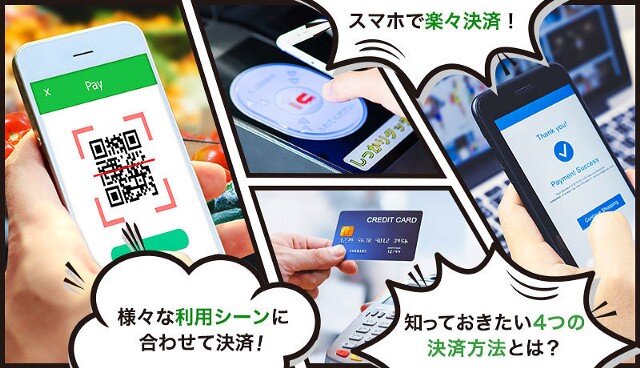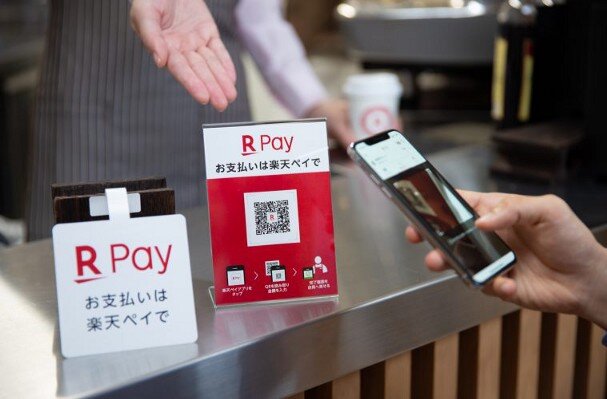 Business
Business
Cashless Payments in Japan: 5 Prominent Players in the…
By Greg Kaszas
As the global digital economy is expanding, cashless payments in Japan are making their way into everyday life all around the world. Advantages include the ability to simplify payment sending and receiving process, a shrinking grey economy, a boom in e-commerce, and a sharp reduction in fraud. A study by BCG has concluded that more cash-intensive economies tend to grow slowly and therefore miss out on significant financial benefits.

What are the growing trends in cashless payments in Japan?
Unlike in Europe, where cashless payments typically refer to microchip-based card and mobile payments, Japanese consumers have more options when it comes to settling transactions. For example, electric money (denshi manee — 電子マネー) on prepaid cards is used for around 2% of total payments in Japan, the highest ratio globally. These include IC cards used on public transport that also work in convenience stores as contactless payment cards.
Another promising technology is QR code mobile payments, which has recently started to gain popularity.
Cashless payments in Japan represented about 21% of total payments in 2017. The country now lags behind rival Asian economies such as South Korea and China, where the usage rates are 90% and 60% respectively. Among developed nations, only Germany has a more cash-intensive economy.

However, innovative Japanese and international companies are committed to changing the situation. There is also backing from the central government, which is taking measures to raise the ratio of cashless payments in Japan to 40% by 2025, with a long-term goal of 80%. Recently, as conglomerates like SoftBank and Amazon are rolling out new mobile payment methods, more and more consumers seem to be adopting new cashless Japan technologies.
The Japanese government is also about to launch a programme to subsidise the cost of reward points and place a 3.25% cap on credit card processing fees from October this year as part of an effort to help small retailers make the transition.
According to Nikkei, Japan’s convenience stores will offer 2% discounts on the spot for cashless purchases starting from October, coinciding with the consumption tax hike from 8% to 10%. As soon as the tax increase kicks in, the government will offer points redeemable for future discounts to shoppers who use QR codes and other cashless payments for a period of nine months. The project has a total budget of 280 billion yen ($2.6 billion USD), which will be re-assessed in the new fiscal year.
Currently, credit cards account for 90% of all cashless payments in Japan, where the majority of cardholders pay off their balance in full each month. Debit cards are less widely used as domestic banks have only started to promote their usage in the past few years. Consequently, Japanese credit card companies rely more on processing fees from retailers for income than in other places.
New entrants in the market are experimenting with different technologies, such as QR codes, which have gained popularity in China due to low implementation costs. One of the objectives of large companies entering the payments market is to strengthen customer retention, and gathering big data on the user base. Recently, it has become a trend to offer significant point discounts or cashback promotions in order to entice consumers.
Who are the major players in cashless payments in Japan?
Rakuten Pay

Since its inception, the Rakuten Pay app has proved to be a hit with consumers, consistently ranking as the most popular payment app in Japan. The company attributes its success to three core factors; the Rakuten ID, the loyalty programme, and the merchant network.
There are more than 100 million Rakuten IDs registered and users only need their unique ID to access the full spectrum of Rakuten services, from travel to online shopping. The user’s payment information is already registered, giving the company a considerable competitive advantage. But while this low barrier to entry for new users puts Rakuten in a good position, that alone may not be enough to outperform other e-commerce platforms.
Rakuten’s loyalty programme plays an essential role in customer retention. Users can not only earn Rakuten Super Points, but also spend them across Rakuten’s other services. Another factor driving Rakuten’s success is the merchant network. With over 3 million places in Japan where smartphone payments are accepted, the company remains far ahead of the competition. These places include a range of partners like small businesses, convenience stores, and taxi firms. That number will soon grow to nearly 3.6 million through a collaboration between Rakuten and East Japan Railway Company (JR East) to promote cashless payments in Japan.
The partnership will launch the programme in spring 2020, and users of the Rakuten Pay smartphone app will be able to use the Suica e-money service offered by JR East. The new feature will allow customers to use the Rakuten Pay app as a form of e-money for public transports (trains and buses), as well as at an extra 600,000 stores.
PayPay

One of the biggest challengers to Rakuten Pay is PayPay, a mobile payment platform launched in autumn last year by Yahoo! Japan and its parent company, SoftBank Mobile. Many small shops in Japan have started accepting PayPay as the shop’s only cashless payment option thanks to its generous launch campaign. SoftBank began to promote PayPay starting December last year, rewarding users with 20% off payments made through the app. In just ten days, the number of users reached 4 million.
The service works by opening an account with PayPay, depositing a certain amount of money, and making purchases via QR code on a smartphone. For shop owners, there are virtually zero installation costs; all they need to do is download the app and print out their unique QR code. Early adopters were guaranteed that no fees would be charged for three years.
LINE Pay

LINE, Japan’s most popular messaging app, also entered the cashless payments in Japan market last year. The company is also spending heavily as it tries to expand overall users. Like PayPay, LINE enabled stores to adopt its payment system for free. Until last year, other QR code services typically charged stores about 3% of each transaction. LINE Pay also rewards user with up to 5% of payments made in the form of points. LINE already boasts 79 million Japanese users of its core messaging app, and LINE Pay is accepted at around 1.3 million stores.
Alipay

Alipay, a Chinese mobile and online payment platform released by Alibaba Group, has entered the Japanese market with the aim of chasing Chinese tourists to Japan. According to Alipay CEO, over 300,000 merchants in Japan now accept Alipay, five times more than a year ago. Some duty-free counters at big department stores deposit tax refunds directly into AliPay accounts. The app uses targeted advertisements to help users find what they want to buy and recommends related products nearby. When users return to China, they get a recommendation to buy similar Japanese goods online.
Amazon Pay

Amazon Japan has partnered with startup Nippon Pay to bring the Amazon Pay service to unaffiliated brick-and-mortar shops for the first time. The US internet giant already accepts QR code-based payments at its physical Amazon Books stores in the US, but Japan is the first market where the conglomerate has brought the same service to non-group retailers. The internet company usually tests services in the US before diving into a full launch, but Japan has proved to be a more attractive market for their cashless payment service.
The company is starting with small merchants that don’t accept credit cards. Nippon Pay will cover transaction fees until the end of 2020 if stores sign up for the service by the end of this year. The service is available to anyone who has provided Amazon Japan with their credit card information and has the app installed on their smartphone. Consumers are likely to find this arrangement convenient, and Amazon will be able to track customers’ offline buying behaviour as well. So it’s a win-win deal.
Setbacks to adopting cashless payments in Japan
Although large digital conglomerates see significant potential in cashless payments in Japan, many Japanese consumers are still sceptical of new services. They often cite concerns about security and feel no urgency to sign up for payment apps in a country where cash is readily available. Across Japan, there are more than 200,000 24-hour ATMs, and crime is at one of the lowest rates worldwide. Japan’s addiction to cash is also fuelled by the ageing society as well as the slow spread of new services.
Japanese SMEs can also be reluctant to adopt cashless payment methods. For one, small businesses have to bear the cost of installing payment terminals and even put up with long payment collection periods. High processing fees can also be a deterrent. Without special promotions, processing charges normally hover around 2–5% in Japan, reportedly higher than in most countries.
As a case study to illustrate a significant setback, let’s take a look at 7Pay, a cashless payment service rolled out this year by 7-Eleven, Japan’s second-largest retail group by sales. The 7Pay service allowed users to pay for purchases at Japan’s roughly 21,000 stores through a smartphone app. However, the app got hacked only days after its launch. More than 38 million yen ($350,000) has been confirmed missing from 808 7Pay user accounts, the company said.
The payment app was vulnerable to cyber attacks because 7Pay didn’t have two-step authentication in place to verify user identities when logging into the service. Adding this extra layer of protection as well as other new security features would have delayed the launch, but the company was eager to roll out the service as soon as possible. Having lost the trust of its users, 7Pay will be terminated at the end of September. This example marks a serious setback for the broader adoption of digital payments in Japan.
So what’s next for cashless payments in Japan?
It may seem that fast-growing cashless Japan payment market is already oversaturated, and yet new entrants keep on penetrating the market. This can make consumers feel overwhelmed with the number of available options. Service providers use generous reward programs to lure users and merchants, but in some cases the tough competition can lead to a decline in the quality of services.
Credit cards remain by far the most popular method, however, alternative mobile payments have experienced a rapidly growing customer base. Whether Japan can achieve its ambitious targets will likely depend on reducing adoption costs for merchants and increasing the rate of new user acquisition.
Interested in other aspects of Japan’s tech ecosystem? Take a look at this article we wrote on agetech and healthcare in Japan.
Follow us on social media: LinkedIn, Facebook, and Twitter!
Alternatively, feel free to contact us to see how we can help.









